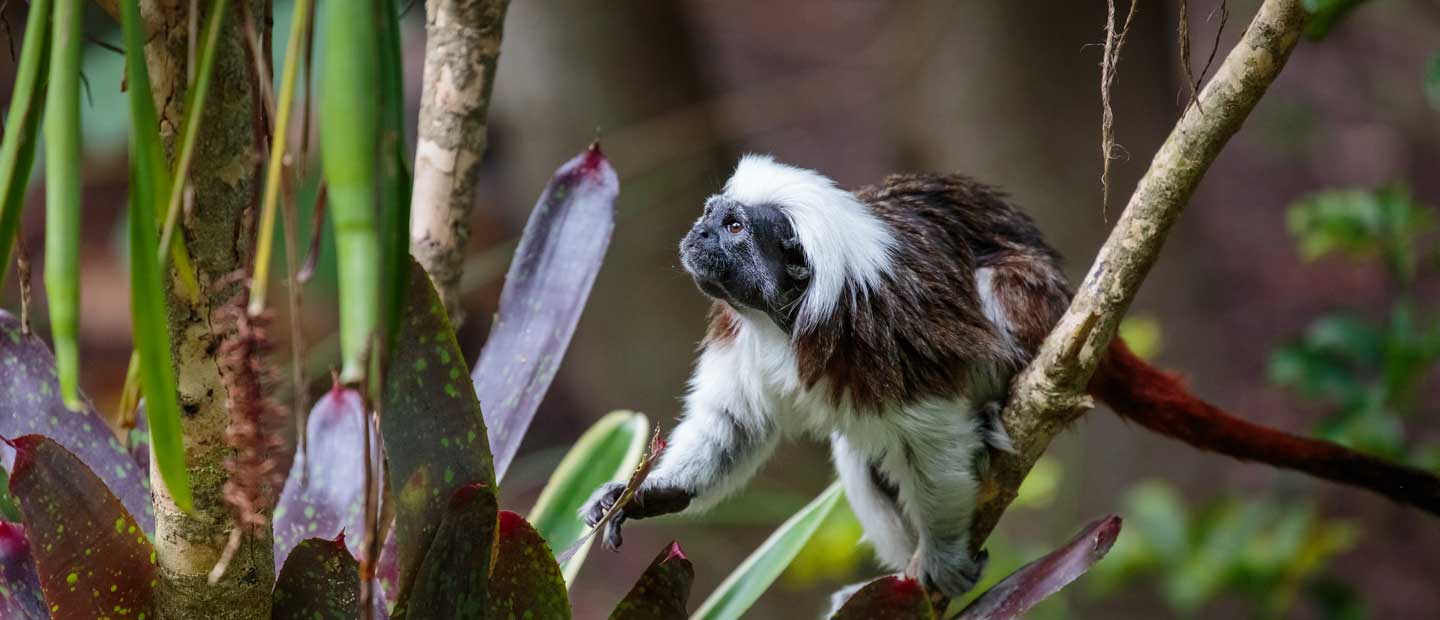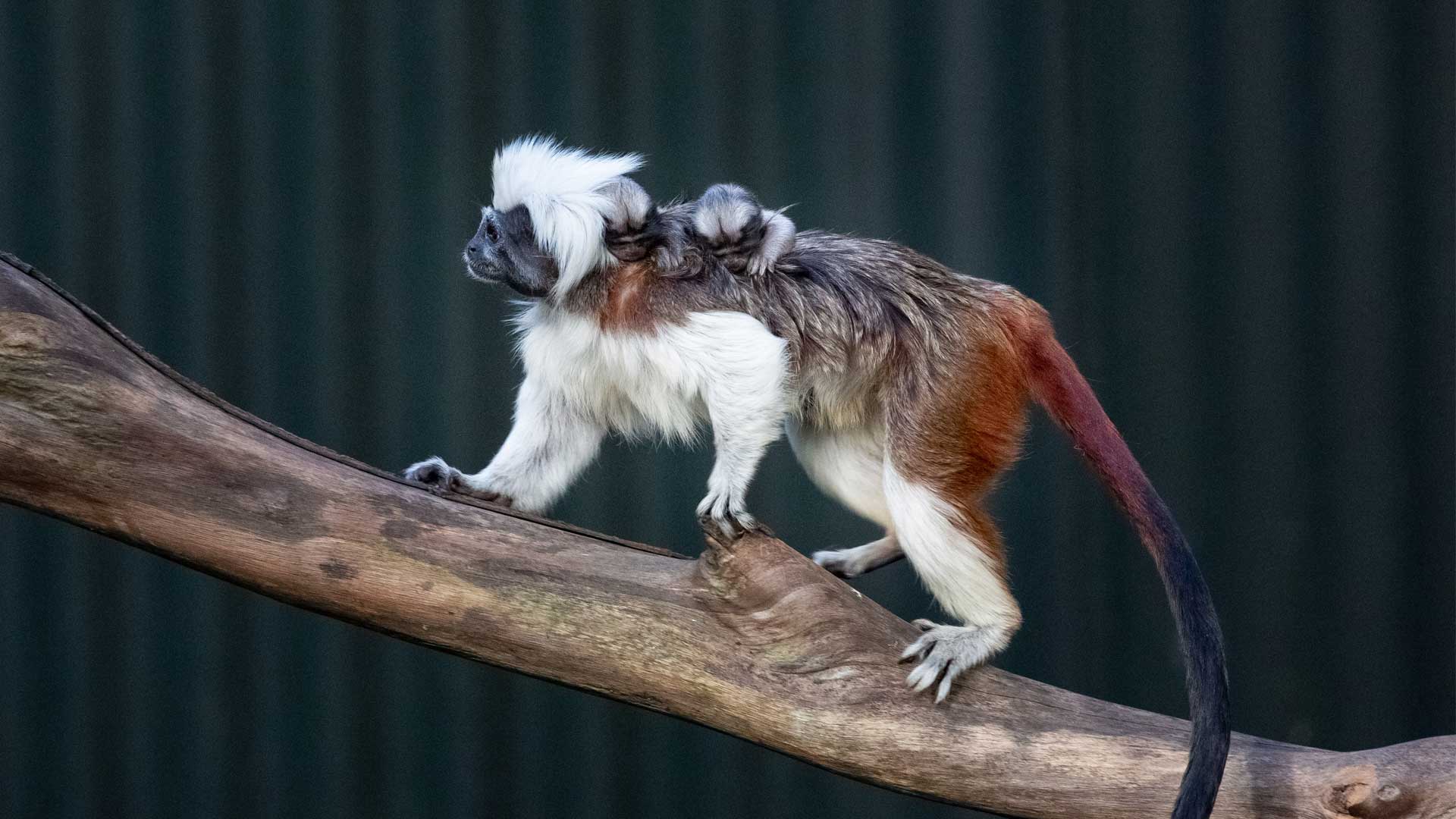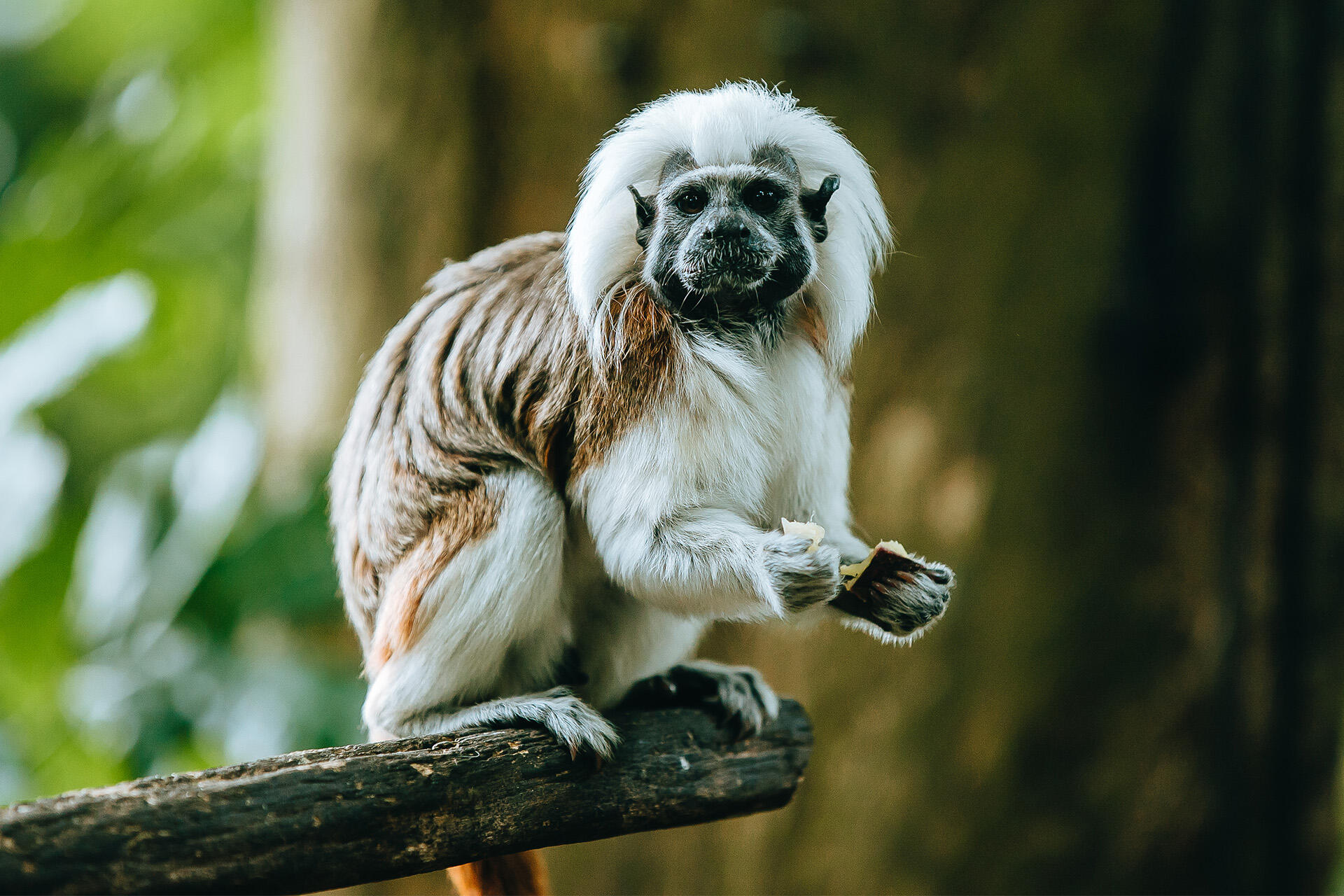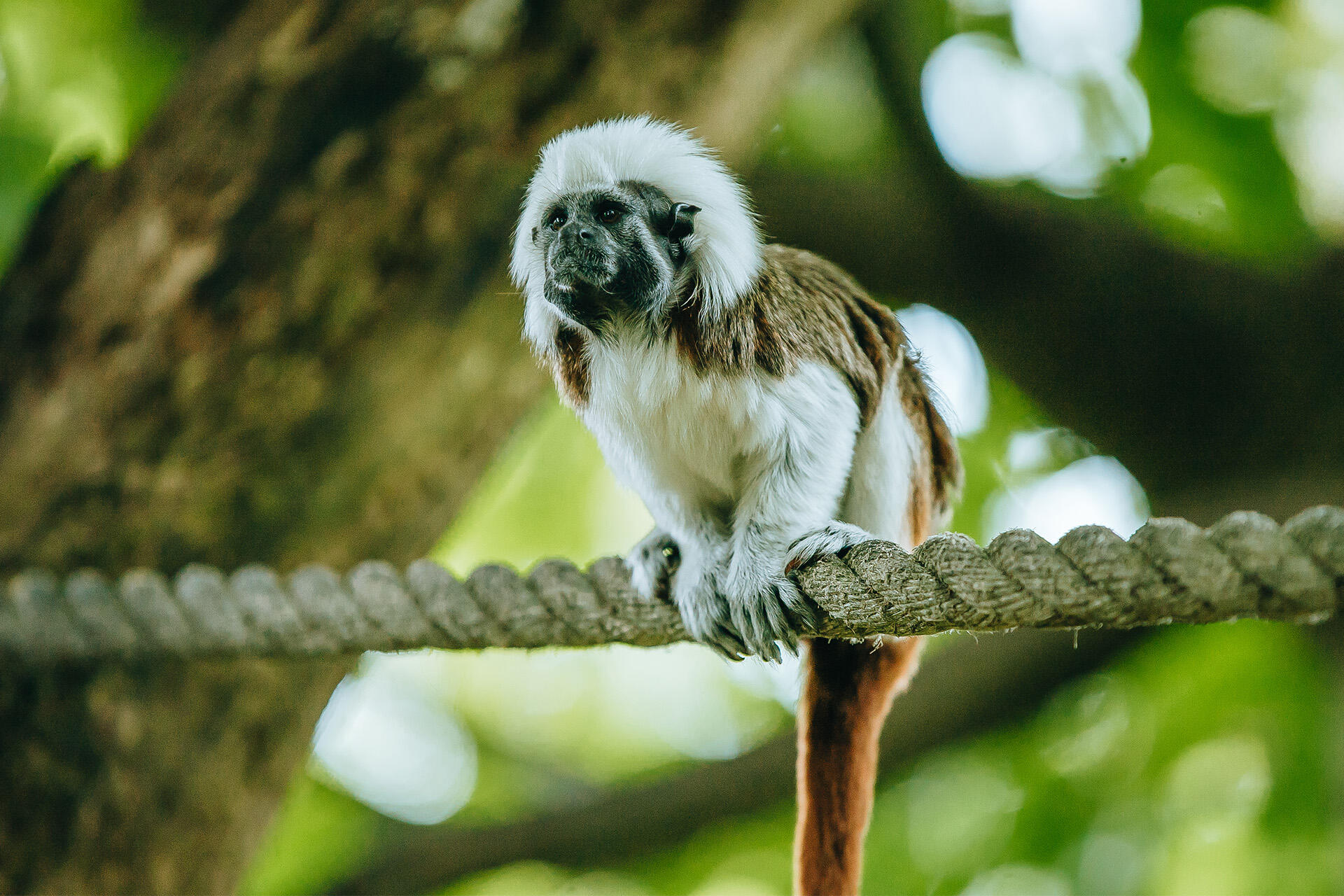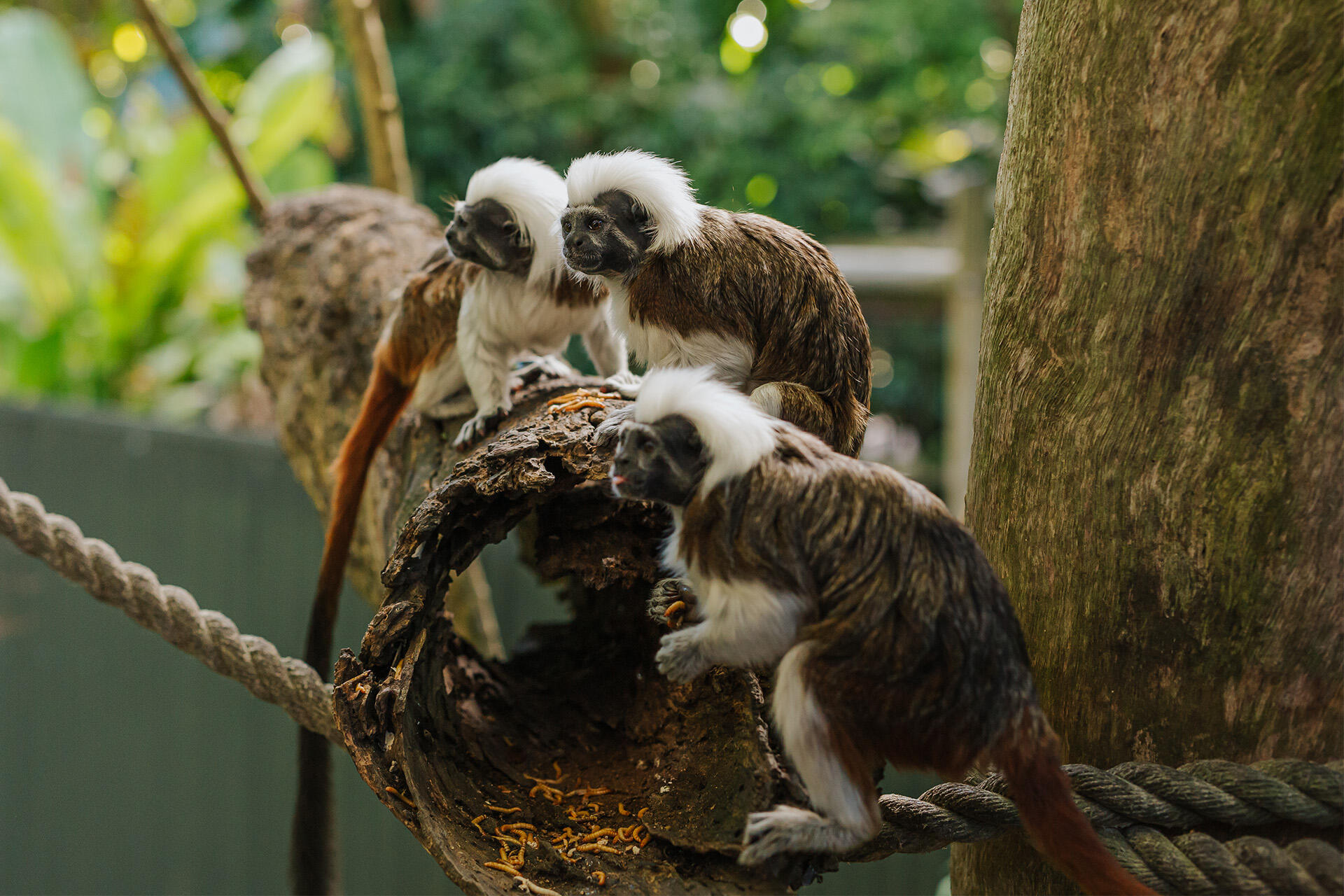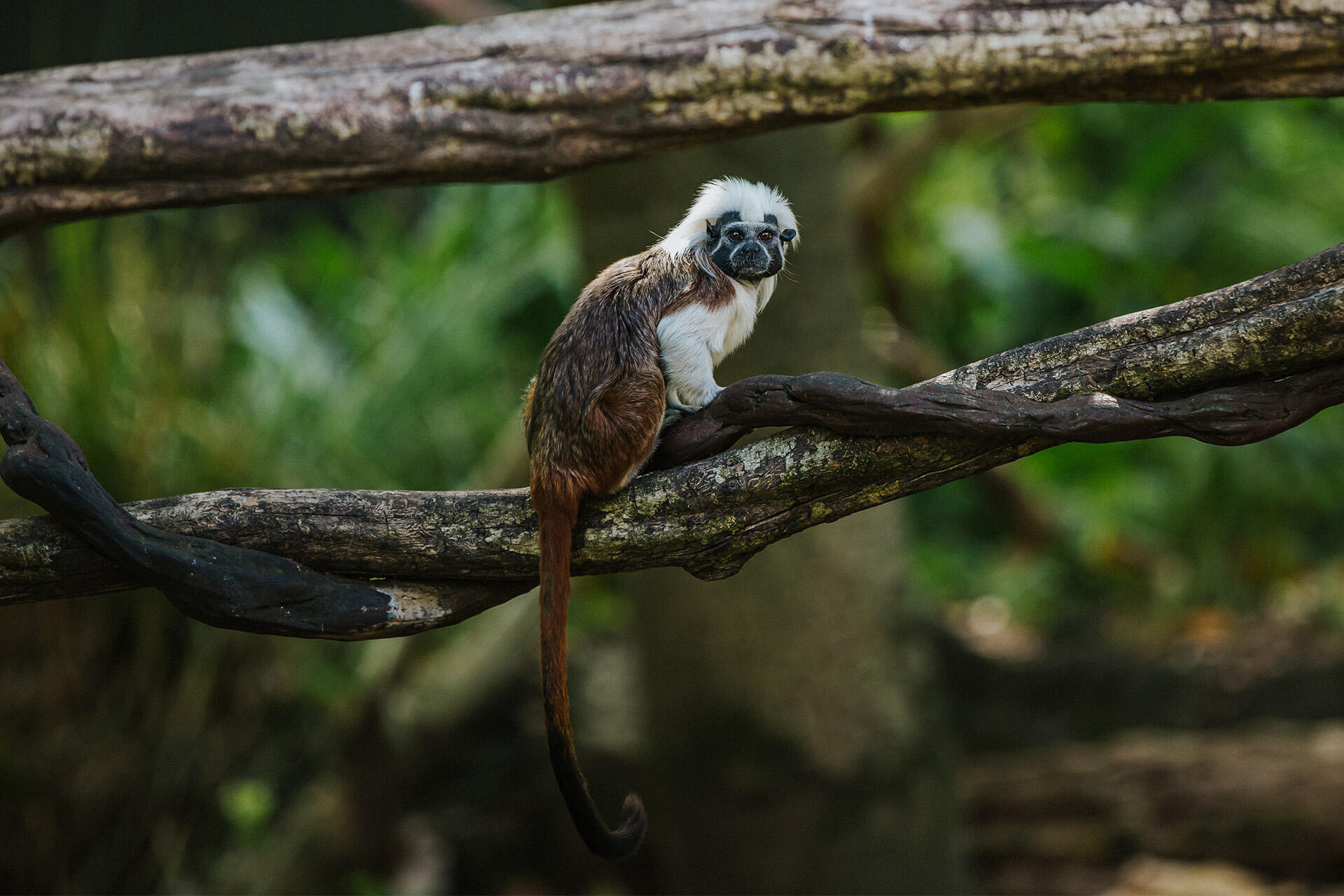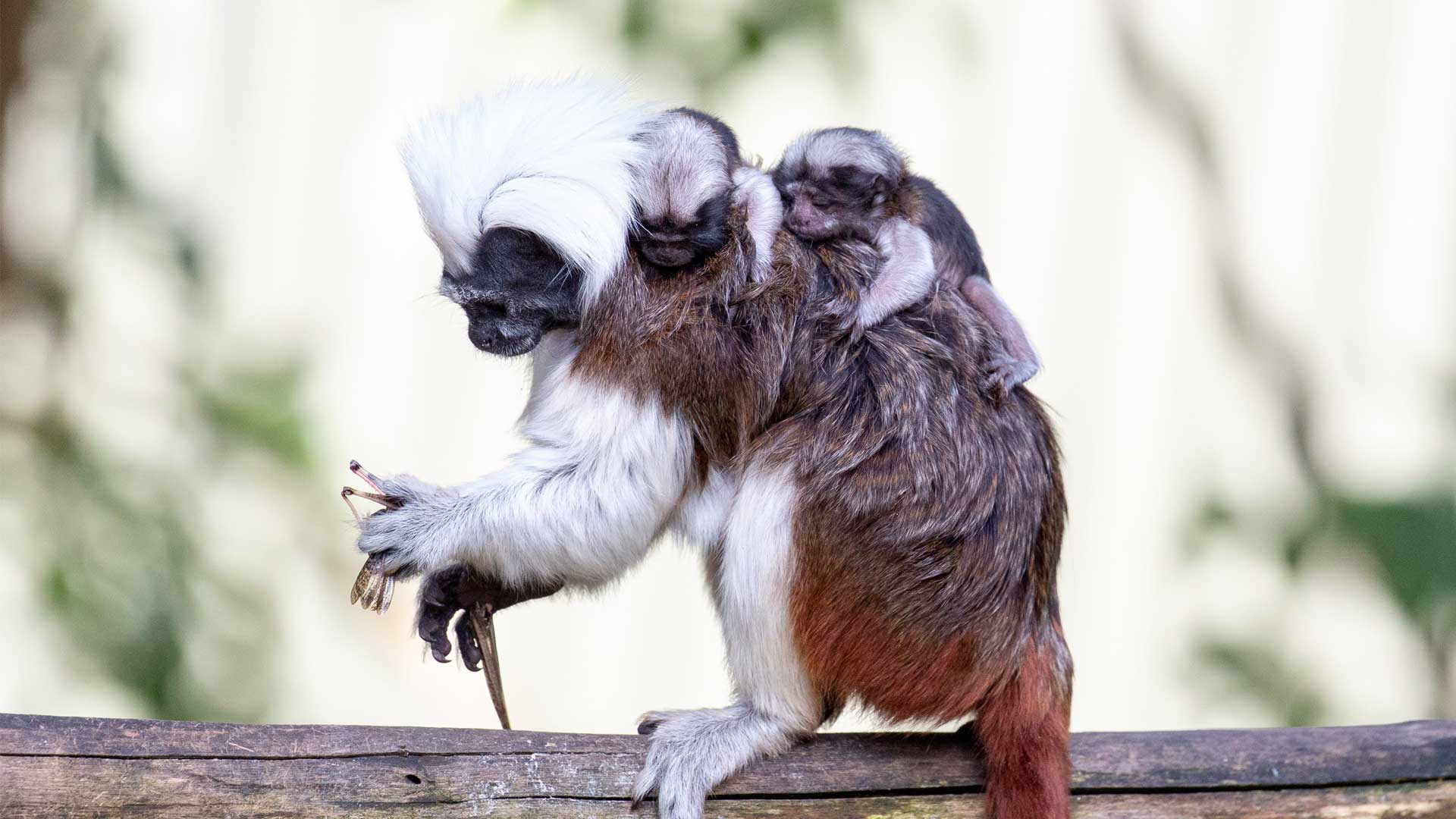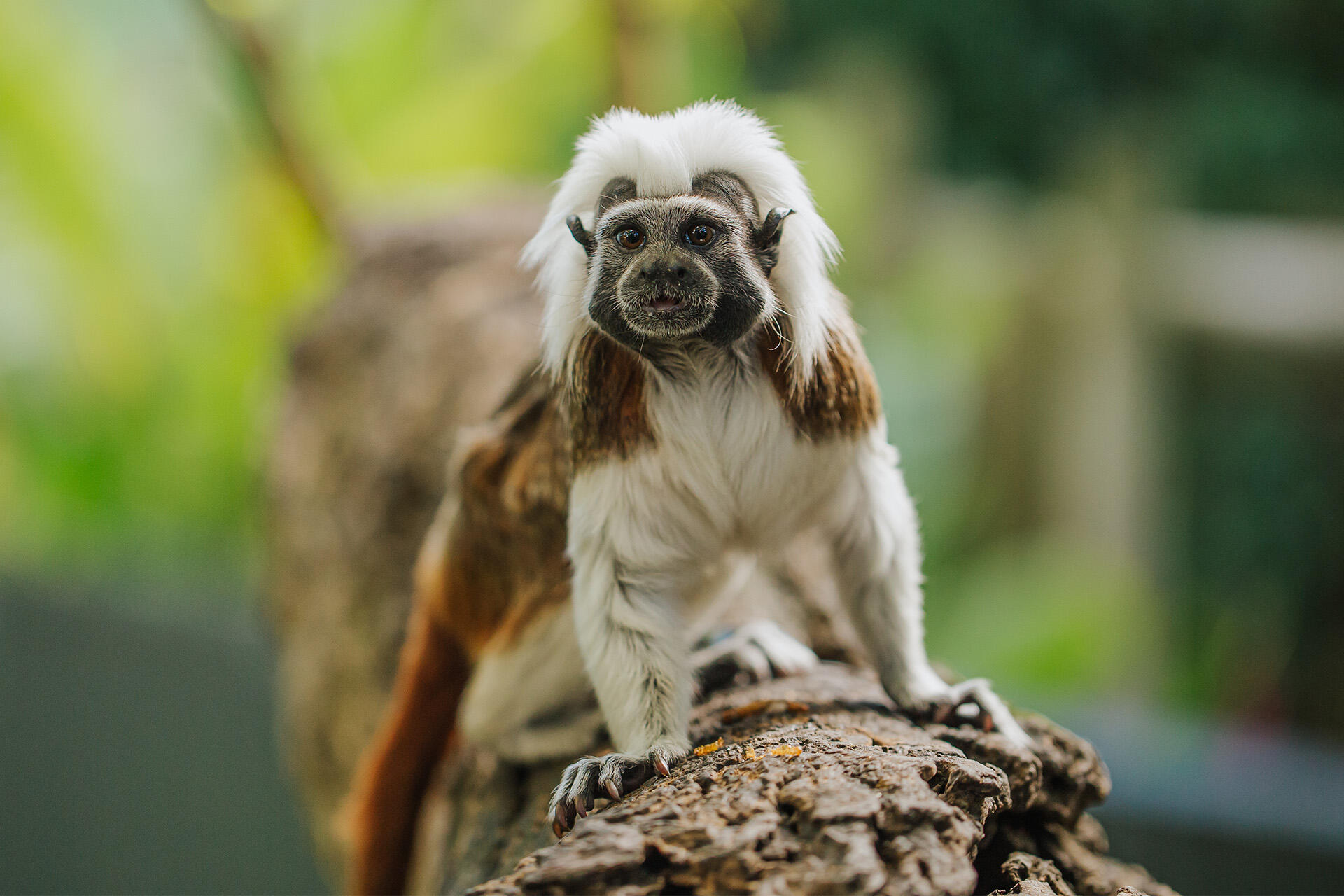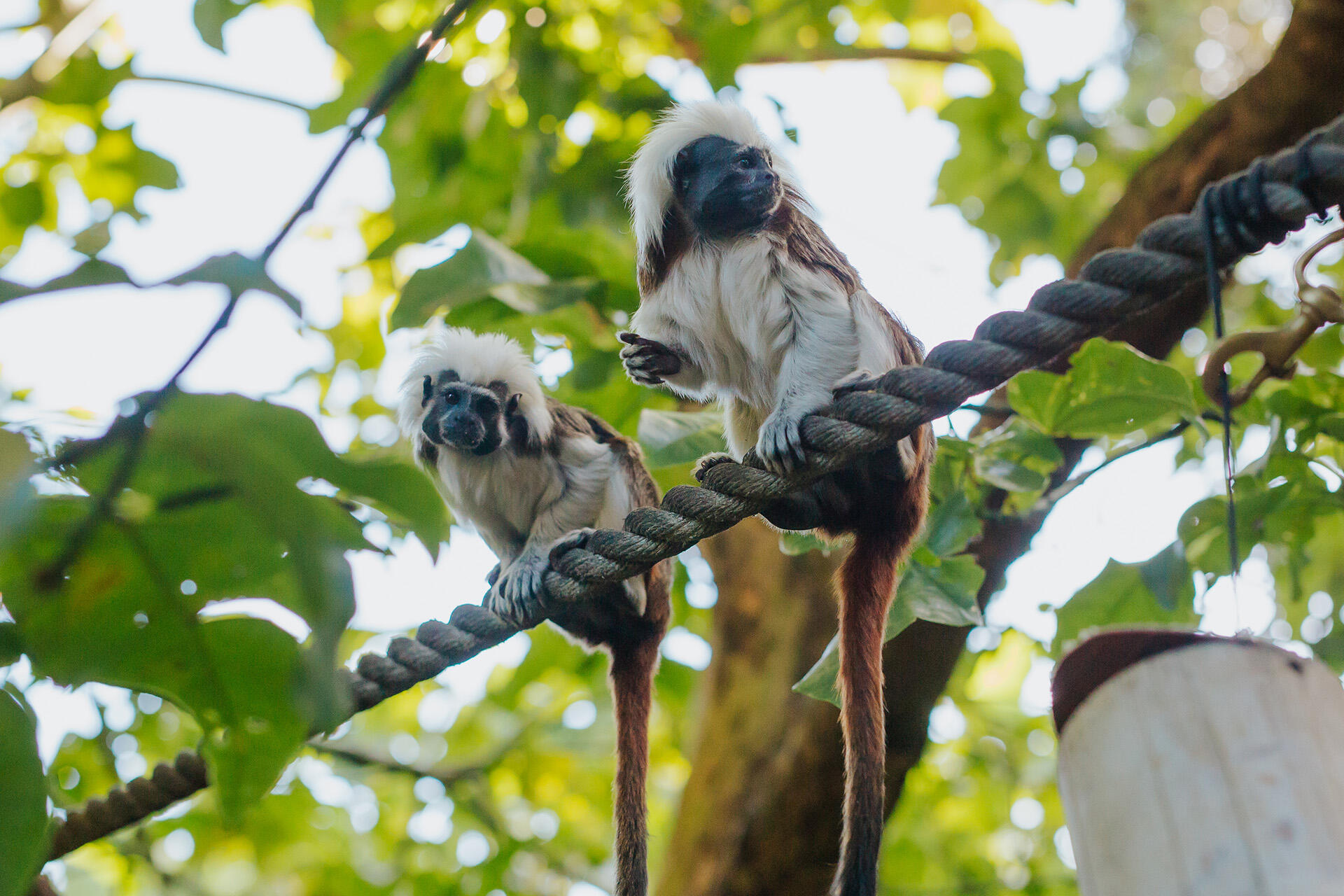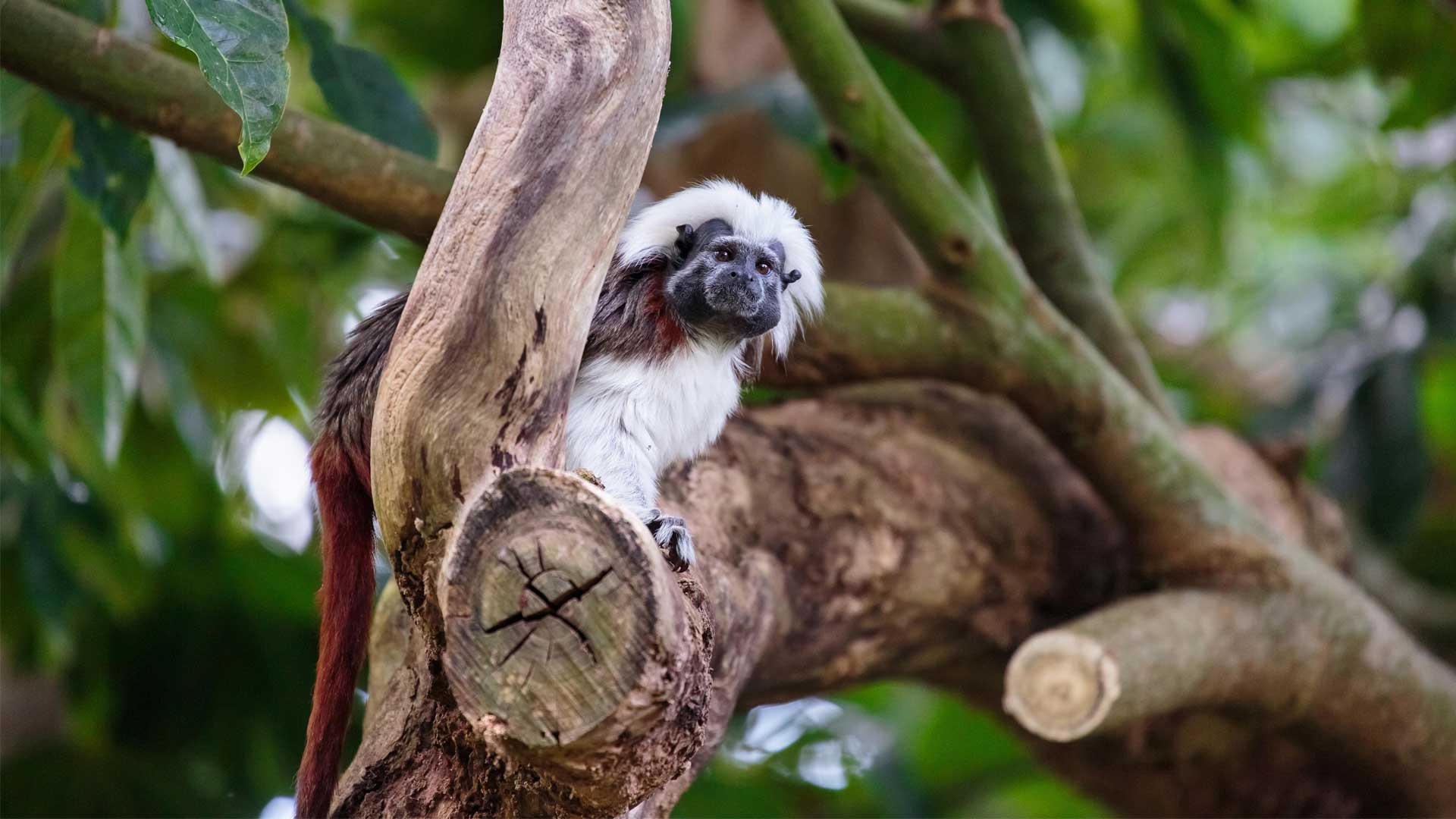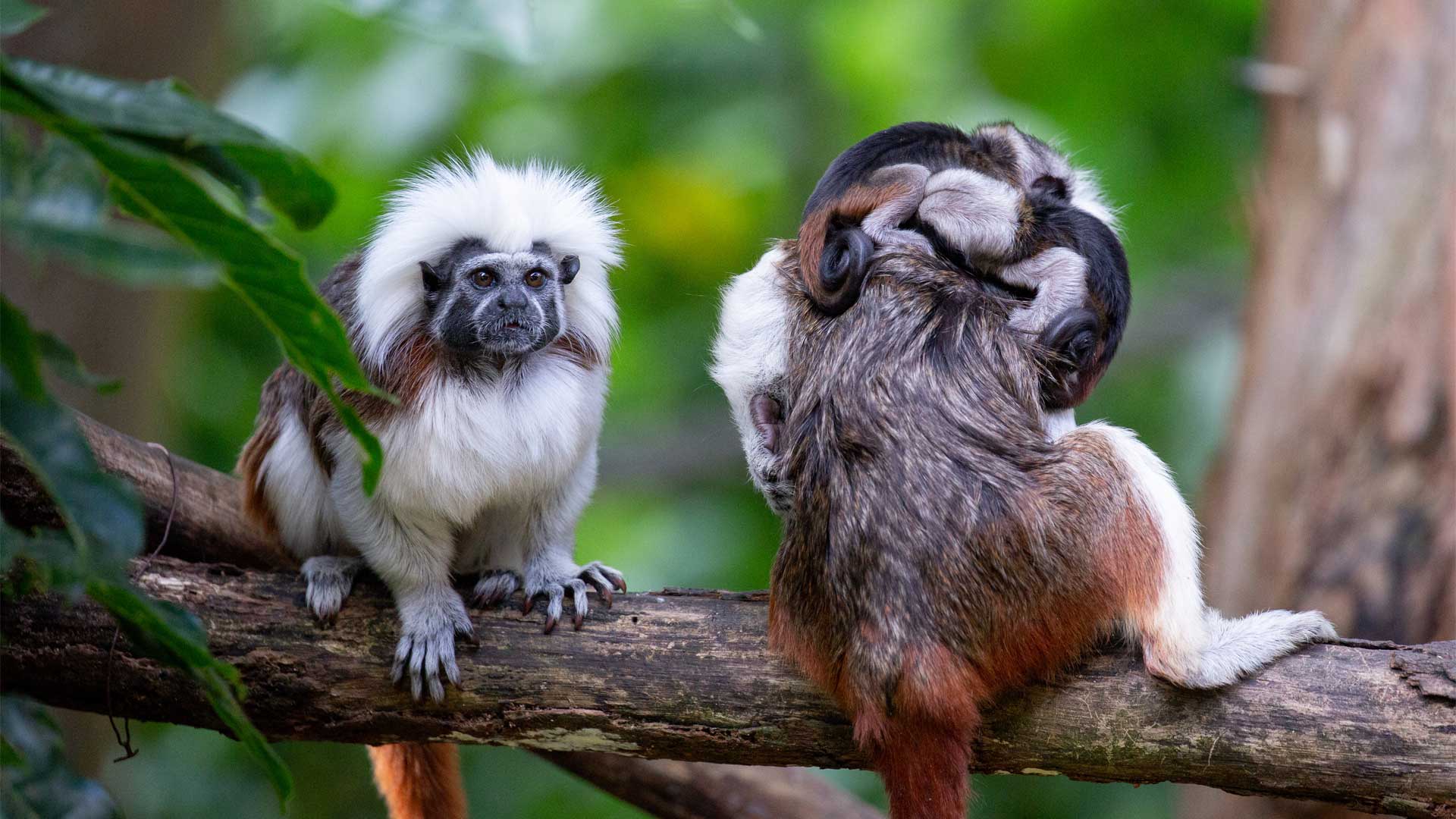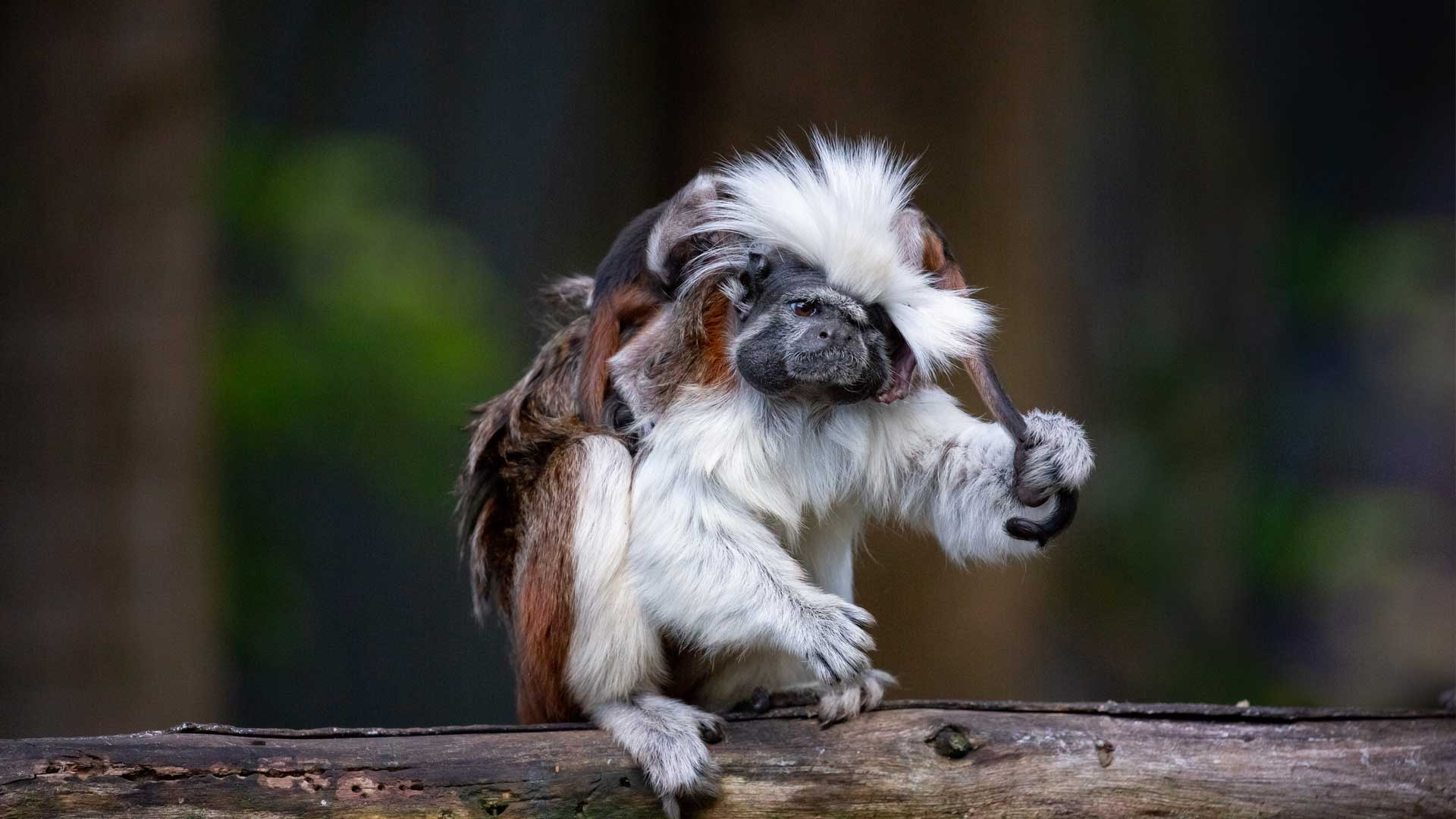Family
These New World Callitrichids are very social and live in family troops of 2 – 13 members. Both male and female tamarins share parenting duties, and males will often carry babies around on their backs (like a little baby backpack!). As they grow up, the offspring will stay in the family group and help to raise their siblings as well – which is an important part of their development. Cotton-top tamarins mate for life and a group will have one dominant breeding pair, meaning only one female has babies at a time.
Adaptations/Head to toe to tail
Cotton-top tamarins have long claw-like nails to help with climbing trees and accessing hard-to-reach food. Their hands and feet look very similar, with claws on all fingers except one, which has a special nail they use for grooming themselves and their family members. Their long tail provides excellent balance when they’re hanging from their back legs or jumping between trees.


